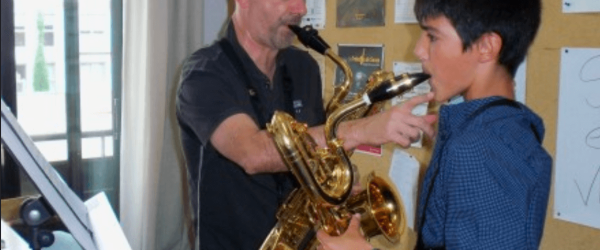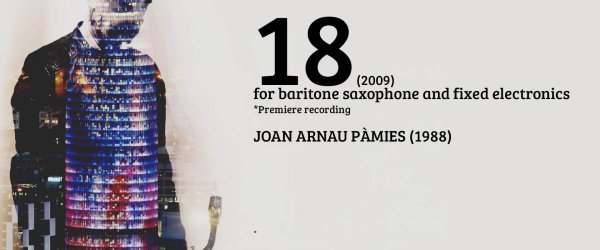
VA I VE is a short and intense piece. It is full of dynamic and character contrasts that perfectly describe the back-and-forth movement (“va i ve”) of its title. Enjoy!
The Composer
SERGIO FIDEMRAIZER (Rosario, Argentina, 1958) is a composer based near Barcelona (Catalunya, Spain) for more than 30 years. His extensive production includes all genres of contemporary music. Especially, his chamber and solo instrument music have given him international projection and is often performed in different music festivals in Europe and America.
Click here to read more about the composer.
Details of the work
Fixed electronics (Tape).
Publisher: Editions Bar&Co (FRA)
Duration: Around 6:05
Range (written): A#2 – E6
TECHNIQUES: Some very fast excerpts. Trills and tremolos. Wide range of dynamics. Glissandi and portamenti. Diversity of articulations and vibratos. Vibratos and oscillations. Slaps. Growl. Key sounds. Flatter. Air sounds. Altissimo register. Multiphonics. Voice.
PERFORMANCE: Playing with lots of intensity, even violence. Interaction with the electronics part. Some improvisation. Scenic and theatrical attitude.
Meaning and structure of Va i Ve
I commissioned VA I VE to Sergio Fidemraizer, after listening to EN TRÁNSITO, a piece for saxophone trio (2 tenors and 1 baritone) that I liked very much. Sergio proposed composing a piece for baritone saxophone and tape, and the idea thrilled me. Completed in August 2010, I premiered it on October 24, 2010 at the 3ème Rencontre International autour du Saxophone Baryton in Ambazac (Limoges, France).
VA I VE is a very physical piece. It should convey a strong sense of agitation. To achieve this, you must play the note groups very fast, by always shortening the last note to slightly separate these excerpts from each other. Furthermore, you should also strongly accent the trills and growls and clearly articulate all the detached single notes. Always play with great intensity and energy. Play the “expressivo” sections with a wide sound, emphasizing the portamenti and growls.
Technically, VA I VE is not a very demanding piece, although you should control some techniques such as slaps, multiphonics and growls.
Scenic attitude deserves special attention. In the most theatrical moment of the piece, at [04:30], when you ask the audience “faig un altre?” [FON. fáʧ un áɫtɾə?] (trad. “Should I do another one?”) and then start playing again, a little bit reluctantly; you should perform as an actor. In addition, it would be nice if your gestures are very clear. Don’t be shy.
The electronic part of VA I VE contains some pre-recorded baritone saxophone sounds mixed with other electronic-origin sounds, all processed using distortion, sound saturation and other effects. The audio features constant changes in dynamics, character, and stereo image.
The score is divided into measures, each lasting one second, and the notation is spatial (note and rest durations are relative). It will be useful to play it with a chronometer.
—
Would you like to know more about VA I VE by Sergio Fidemraizer? Would you like to work on it? Don’t hesitate to contact me for more questions.
Joan Martí-Frasquier
Barcelona, December 2016
Update: April 2025





